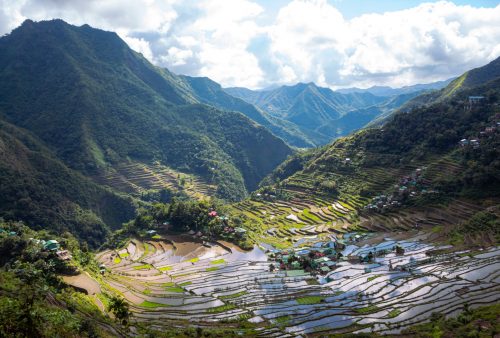But as a result of the significantly upgraded foundation on Mindoro, Apo Reef is currently a lot more approachable. And justly unexplored Sablayan might just be the next big thing in Philippines travel.
Apo Reef, the second biggest adjoining coral reef in the world following Australia’s Great Barrier Reef, rests in the centre of the South China Sea about two hours to the west of Sablayan by powered Bangka (a Philippine canoe boat). The agreement in many dive rings is that Apo is the prime dive location in the country, the one true rivalry coming from the even more distant Tubbataha Reef in the Sulu Sea, some hundreds of kilometres away, which is only approachable for a couple of months every year.
The amount of fish at Apo is astounding, with dogfish tuna and large schools of jacks cruising the extent just off the reef beside a procession of barracudas and white-tip, black-tip and reef sharks. In the shallows, you may terrify sleeping nurse sharks and eagle rays; pursue colossus Napoleon wrasses and Hawksbill ocean turtles, site moray eels peeping out of the cliffs and divide thick groves of blue mackerel scad. You might even sight schools of dolphins jumping and glistening around the Bangka on your way to and from the reef.
Such a splendid and varied range of aquatic life is unprecedented at other dive locations in the Philippines, which are famously known for corals and radiant macro, tiny aquatic life. But the macro life at Apo Reef is also magnificent – a rapid vivid range of hard and soft corals, glowing corals and nudibranchs, pygmy seahorses, pipefish and other remarkable tiny animals.
The west shore road is mainly concreted, and cosy air-conditioned buses currently come directly to Sablayan from Manila by car ships that come from the Philippines leading island, Luzon, to Abra de Ilog. It is still a nine hour journey, but way more comfy.
When you arrive at Sablayan, there are presently various dive operators to pick, and the dependable Sablayan Municipal Ecotourism Office which could put you up with a batch for an entire day of snorkelling or diving.
The diving is exceptional throughout the year, but the intersection to the reef could be tough in the high rainy period, which is from July to September and from December until February when the northeast monsoon breeze is at its highest state. The water is levelled and the clarity is ideal from late March until May.
Of course you don’t have to be a diver to love the appeals of Apo Reef. Most of the reef rests in the shallow water, and it might be the one location in the Philippines where even snorkelers have the best opportunity to see sharks.
The leading island, Apo Island, not to be mixed up with the famously known island of the similar title off the island of Negros in the mid Philippines, is a palm edged charm, circled by golden sands and home to a rich green inner bay cuddled by acacias.
Sablayan, has a whole unique type of charm, amid San Jose and Sablayan rests the 750 sq km Mount Iglit-Baco National Park, the last enduring haven of the tamaraw, a severely threatened wild bovine. There are plenty of hiking possibilities in the park; also the climb of the 2,364km tall Mount Iglit, as well as the native Mangyan’s who wear loincloth, they inhabit Mindoro’s practically inaccessible inland and provide major tourists an opportunity to tour one of Southeast Asia’s most remote groups.
While Philippine holidays are still a dribble compared with Southeast Asian colleagues such as; Thailand also Vietnam, travellers should think of touring now to encounter the full impact of Apo Reef’s untarnished appeal.







